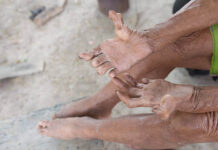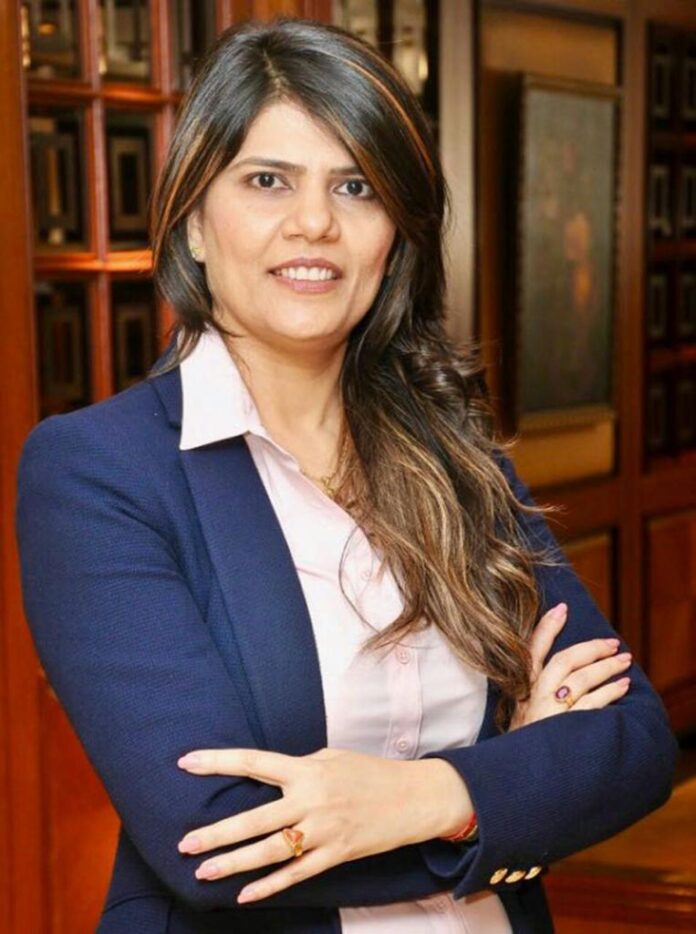Although initially unsure about pursuing a career in medicine, Dr. Dube’s father’s encouragement and her own innate empathy for others led her to take the challenging path of becoming a doctor. With determination and perseverance, she overcame doubts and obstacles, becoming the first doctor in her family.
Dr. Sunita Dube has always been driven by a deep desire to care for others and make a positive impact on society. From a young age, she felt a strong calling to serve humanity, alleviate suffering, and bring comfort to the sick and ailing.
The path of Dr. Sunita Dube in the field of medicine has been shaped by a profound sense of destiny and purpose. Since her early days, she demonstrated a compassionate and gentle approach to caring for her ailing grandfather, a quality that would later define her dedication to serving the broader community. With unwavering humility and an unwavering commitment, she fully embraced her calling as a healer, leaving a lasting impact on the lives of those she has touched.
Compassion and Dedication
As a doctor, Dr. Dube has dedicated herself to continuous learning and personal growth. Every day, she acquires new skills and experiences, honing her abilities to better serve her patients and the community. Driven by her caring and compassionate nature, she goes above and beyond, not only in her clinical practice but also in her involvement with non-profit organizations like MedScpaeIndia.
Through MedScpaeIndia, Dr. Dube spearheads projects that focus on saving the girl child, sponsoring education for girls, promoting the Fit India movement, and conducting community welfare programs. Her commitment to social causes and her desire to make a difference have earned her admiration and respect.
Long term Vision
Dr. Dube’s vision extends beyond her current accomplishments. She envisions establishing a research center and providing training nationwide for life-saving techniques such as CPR. With a strong belief in the importance of radiology in healthcare, she strives to enhance the image of radiologists and raise awareness about preventive radiology. Her goal is to empower women radiologists and establish low-cost schools and hospitals to benefit a wider population.
Throughout her journey, Dr. Dube remains focused on giving her best in everything she does. She approaches her work with sincerity, happiness, and a commitment to organization and discipline. Her profound impact on healthcare, coupled with her compassionate approach, continues to shape the lives of individuals and communities across the nation.
Acclaimed Radiologist
Dr. Sunita Dube is an acclaimed MD radiologist, philanthropist, and healthcare entrepreneur. Dr. Dube’s innovative and ground breaking work has earned her accolades from esteemed dignitaries such as Hon. Ex-President Pranab Mukherjee, His Holiness the Dalai Lama, Bharat Ratna Dr. APJ Kalam, and Honourable President Ram Nath Kovind. Her valuable contributions to accessible healthcare, philanthropy, and innovation have been widely appreciated.
A Case Study
Dr. Dube shared one of her interesting cases with us:
“A 13 year old girl had undergone rare surgery due to intestinal Obstruction at Aryan Hospital. The patient had come with complaints of abdominal pain, and inability to pass stools for 3 – 4 days with recurrent vomiting on 17th October 2012.
Dr. Prajakt Patil surgeon, said, “She had no previous history except for evaluation of some psychiatric symptoms with medications being taken. Abdominal X Rays revealed features of intestinal obstruction. Hence conservative treatment in the form of intravenous fluids and injectable antibiotics was started. She was kept nil by mouth to prevent further vomiting and a nasogastric tube was introduced to drain all gastric contents to prevent distention.”
“This failed to provide any relief and the distention persisted after 24 hours. Hence a CT scan was done on 19th October 2012 in the morning. This revealed intestinal obstruction with proximal intestinal, stomach dilated fully, and collapsed distal intestinal loops. Hence an obstruction agent probably a lesion or intestinal pathology was suspected at mid intestinal level. A decision to perform emergency surgery to relieve obstruction was taken.” said Dr. Sunita Dube, Director of Aryan Hospital.
“Hence an emergency surgery was performed on 19th October 2012 immediately after the CT scan report and the findings totally amazed us. There was a large ball of hair of 8x6x4 cm in dimensions causing bolus obstruction at 15 cm from the junction of the small and large intestines leading to obstruction at mid-intestine level with proximal massive dilatation. It was large enough to completely occlude the intestine and prevent any peristalsis. It weighed 40 grams.
Psychiatric Disorder
Dr. Sunita explained that about Trichotillomania is a psychiatric disorder with the compulsive urge to pull out (and in some cases, eat) one’s own hair leading to noticeable hair loss, distress, and social or functional impairment. The peak age of onset is 9 to 13. It may be triggered by depression or stress. Common areas for hair to be pulled out are the scalp, eyelashes, eyebrows, arms, hands, and pubic hairs.
In trichophagia, people with trichotillomania also ingest the hair that they pull; in extreme (and rare) cases this can lead to a hair ball (trichobezoar Rapunzel) syndrome an extreme form of trichobezoar in which the “tail” of the hairball extends into the intestines, can be fatal if misdiagnosed.
Anxiety depression and obsessive–compulsive disorder is more frequently encountered in people with trichotillomania. Treatment is based on a person’s age. Most preschool-age children outgrow it if the condition is managed conservatively. In young adults, establishing the diagnosis and raising awareness of the condition is an important reassurance for the family and patient. Non-pharmacological interventions, including behavior modification programs, may be considered; referrals to psychologists or psychiatrists are a must. When trichotillomania begins in adulthood, it is often associated with other psychiatric disorders and referral to a psychologist or psychiatrist for evaluation or treatment is considered best. The hair pulling may resolve when other conditions are treated.
“Shave or groom. In doing so this shortens the hair and prevents the individual from “twisting and pulling” on post-operative treatment.”
Habit Reversal training (HRT) has the highest rate of success in treating trichotillomania. HRT has been shown to be a successful adjunct to medication as a way to treat trichotillomania. With HRT, doctors train the individual to learn to recognize their impulse to pull and also teach them to redirect this impulse.”























